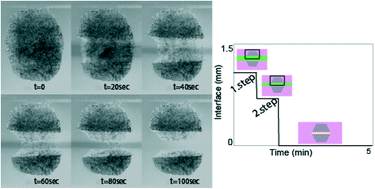3D bio-etching of a complex composite-like embryonic tissue†
Abstract
Morphogenesis involves a complex series of cell signaling, migration and differentiation events that are coordinated as tissues self-assemble during embryonic development. Collective cell movements such as those that occur during morphogenesis have typically been studied in 2D with single layers of cultured cells adhering to rigid substrates such as glass or plastic. In vivo, the intricacies of the 3D microenvironment and complex 3D responses are pivotal in the formation of functional tissues. To study such processes as collective cell movements within 3D multilayered tissues, we developed a microfluidic technique capable of producing complex 3D laminar multicellular structures. We call this technique “3D tissue-etching” because it is analogous to techniques used in the microelectromechanics (MEMS) field where complex 3D structures are built by successively removing material from a monolithic solid through subtractive manufacturing. We use a custom-designed microfluidic control system to deliver a range of tissue etching reagents (detergents, chelators, proteases, etc.) to specific regions of multilayered tissues. These tissues were previously isolated by microsurgical excision from embryos of the African claw-toed frog, Xenopus laevis. The ability to shape the 3D form of multicellular tissues and to control 3D stimulation will have a high impact on tissue engineering and regeneration applications in bioengineering and medicine as well as provide significant improvements in the synthesis of highly complex 3D integrated multicellular biosystems.


 Please wait while we load your content...
Please wait while we load your content...